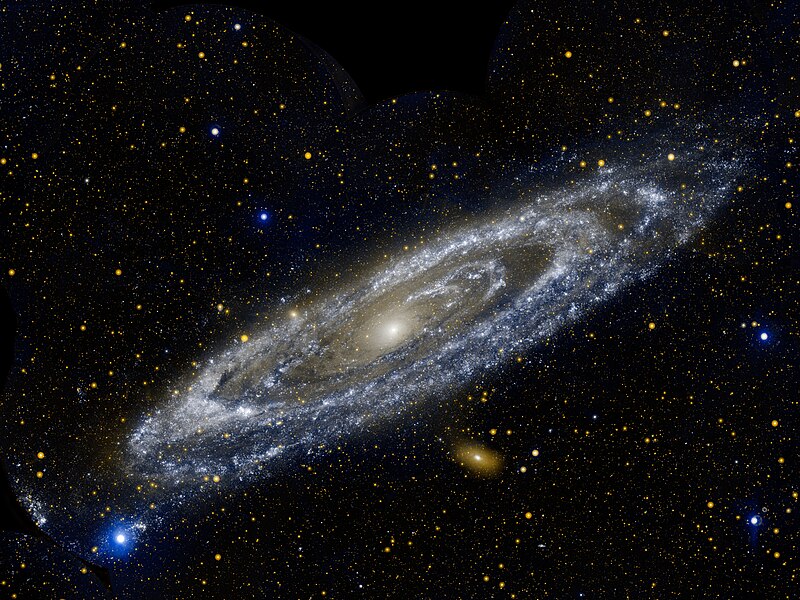| Uwaga |
|---|
Plik:Andromeda galaxy 2.jpg
Przejdź do nawigacji
Przejdź do wyszukiwania


Rozmiar podglądu – 800 × 600 pikseli. Inne rozdzielczości: 320 × 240 pikseli | 640 × 480 pikseli | 1024 × 768 pikseli | 1280 × 960 pikseli | 6000 × 4500 pikseli.
Rozmiar pierwotny (6000 × 4500 pikseli, rozmiar pliku: 21,44 MB, typ MIME: image/jpeg)
Historia pliku
Kliknij na datę/czas, aby zobaczyć, jak plik wyglądał w tym czasie.
| Data i czas | Miniatura | Wymiary | Użytkownik | Opis | |
|---|---|---|---|---|---|
| aktualny | 12:09, 21 maj 2012 |  | 6000 × 4500 (21,44 MB) | Originalwana | {{Information |Description ={{en|1=Hot stars burn brightly in this image from NASA's Galaxy Evolution Explorer, showing the ultraviolet side of a familiar face. At approximately 2.5 million light-years away, the Andromeda galaxy, or M31, is our [[:C... |
Wykorzystanie pliku
Poniższa strona korzysta z tego pliku:

